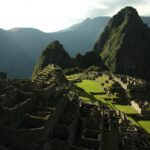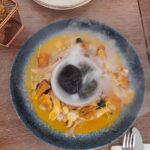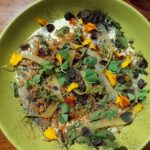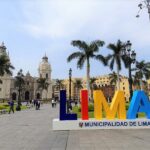Are you traveling to Lima and want to try some of the best food in Peru? In this post, I’ll share my adventure on the top-rated food tour in Lima, and why I think this tour is a great choice if you are visiting the city.
Looking for the best food tours in Lima?
Check out these fantastic culinary tours in Lima, (catering also for vegetarians!):
1. Daytime Lima Gourmet Food Tour (the one I joined and review on this post)
2. Evening Lima Gourmet Food Tour (the evening version of the tour, offering a night-time twist and different culinary highlights).
You may already know that Peru is one of the world’s most important and most outstanding countries in terms of gastronomy. Of all the places in the country, Lima is absolutely the best for dining. We have some of the best restaurants in the world, including the #1 restaurant (Central), as of 2024.
Since there’s so much to try and usually not a lot of time when you are traveling, going on a food tour is a great option to try some of the most emblematic dishes and drinks from Peru, in places ranging from local markets to upscale restaurants.
The Lima Gourmet Food Tour
The Lima Gourmet Food Tour is the highest rated food tour in Lima, so it was a no-brainer choosing which tour to join.
Plus, they cater for vegetarians as well (which I am). Finding vegetarian food in Peru when eating out is not easy, so I felt that this food tour was a gem.
They have tours both in the morning and in the evening.
Opting for the morning excursion, I was treated to a delightful start with freshly brewed coffee and small breakfast, setting the tone for the day ahead. Our journey continued with a bit of walking around the area while tasting a local shake. Next up was a vibrant local market, followed by a hands-on cooking class and a fun pisco tasting.
But what set this tour apart was the lunch at a gourmet restaurant overlooking ancient ruins, which was quite a unique experience.
The evening tour includes more drinks, and an exclusive visit to a renowned restaurant, boasting panoramic ocean views.
Disclaimer: Having heard great reviews about Lima Gourmet, I approached them to write a review of their tour for this blog. They invited me to join the tour, but this in no way affected the honesty and veracity of my review.
Coffee, breakfast, shake, and walking around Barranco
Breakfast

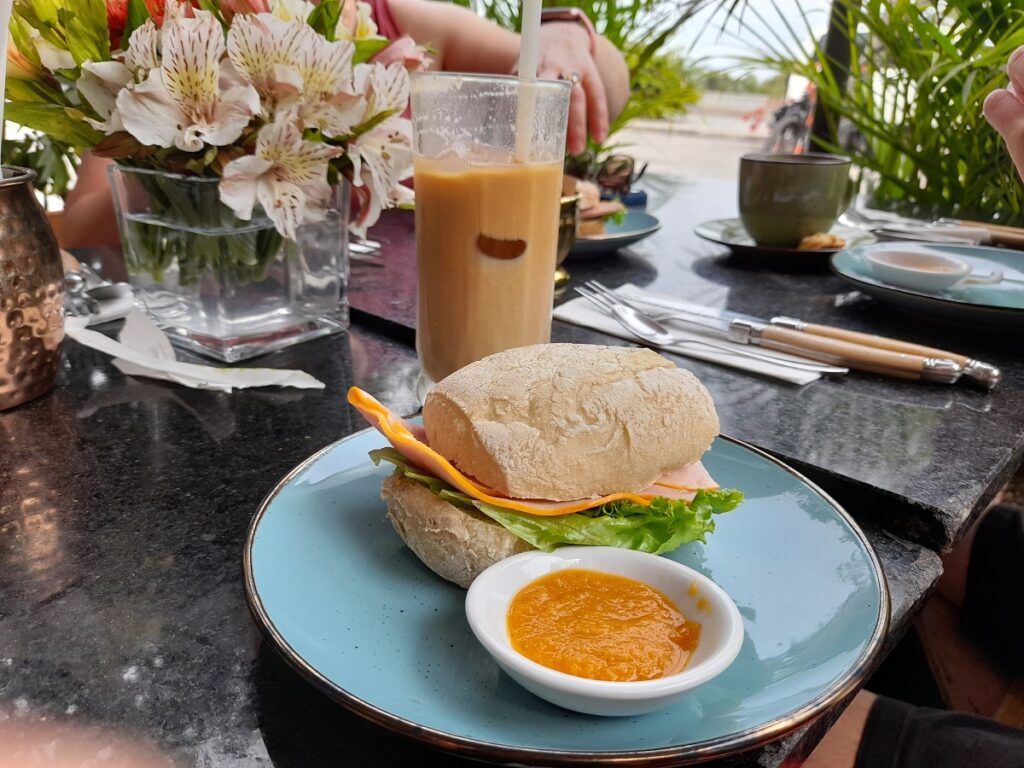
The tour started at Singular, a cafe in Barranco near the sea, where I met our guide, Amy, and two other couples who were joining the tour as well.
The tour includes a pick up from your hotel, if you are staying in San Isidro, Miraflores or Barranco. Since I was staying just two blocks away, I joined the group at the cafe.
After introducing each other, we had our first tasting. Peru is a big coffee producer, so what better way to begin the tour than with coffee! We could order any type of coffee that we wanted, and enjoyed it while our guide gave us details about Peruvian coffee.
The aromatic coffee was accompanied by delicious toast. As a vegetarian, I got an avocado-egg one (Peru is a big avocado producer as well!). The rest of the group got a traditional butifarra, which is a sandwich made of pork, with an onion and chili sauce.
Yummy Local Fruit Shake!
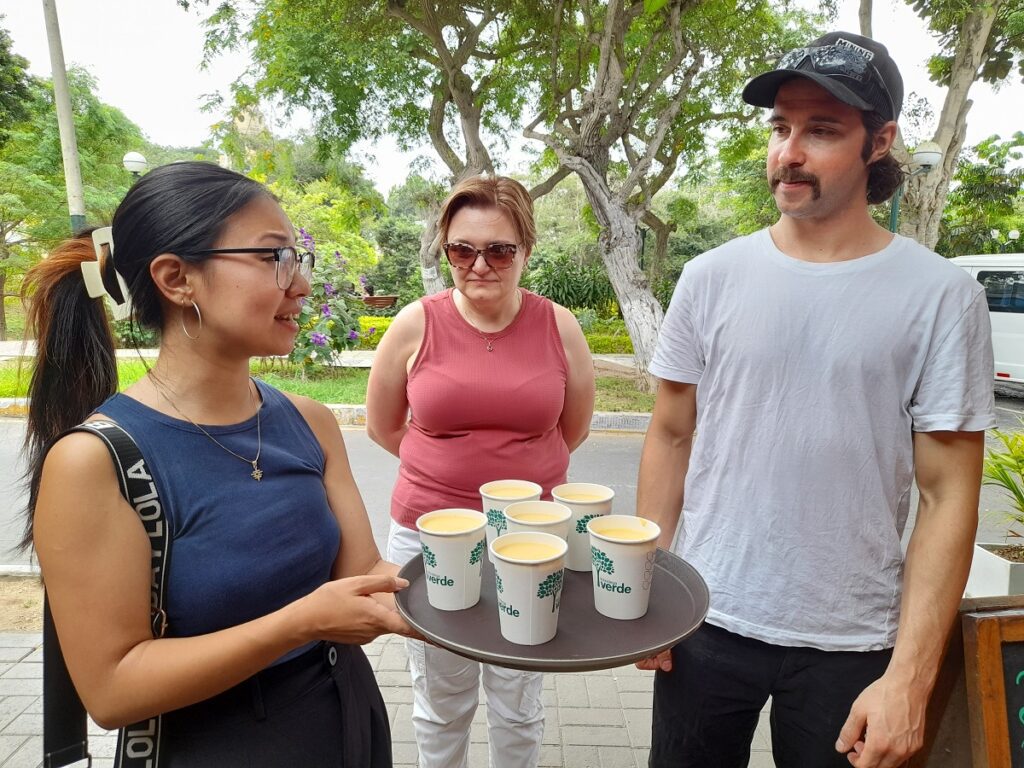
After that, we headed to a cute cafe close by, La Bodega Verde, with a nice patio where there was a big lucuma tree.
We learned that lucuma is a typical Peruvian fruit that grows on the coast. It’s a fruit that locals have been eating for centuries, and that nowadays is used in shakes and desserts.
We enjoyed a tasty lucuma shake on the move, perfectly blended with ice cream. It was really good. I think this must be my favourite Peruvian fruit. But, don’t just buy it and eat it. It’s delicious in a drink but, because of its texture, not so nice when eaten by itself.
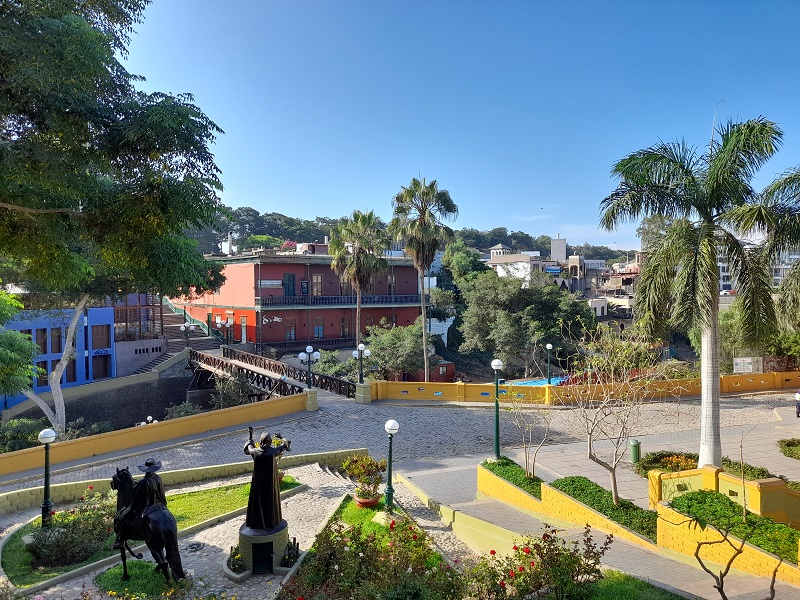
We then walked through the heart of Barranco, which is one of the most beautiful neighborhoods in Lima, learning a bit about its history, while enjoying our drink.
We walked around the Bridge of Sighs, which is one of the top things do in Barranco, and had time to take some pictures.
Traditional Market
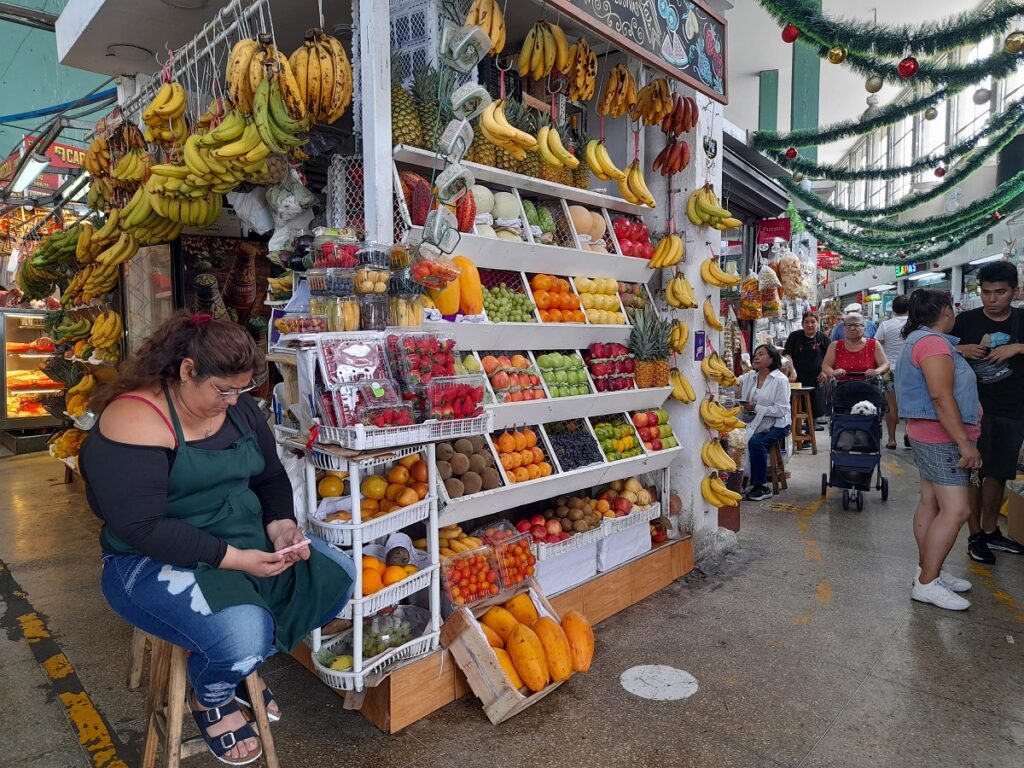
After that, we got in the van, and the food tour continued at a traditional local market in Lima.
Markets in Peru can really give you an authentic glimpse into the local’s everyday life. While supermarkets are very common in big cities in Peru, the vast majority of the population shops at markets.
We walked around the market, surrounded by fresh fruits and vegetables all around. One of the facts that impresses travelers are the many kinds of potatoes that you can see, and you will learn they are just a tiny fraction of the thousands of potato species that there are in Peru!
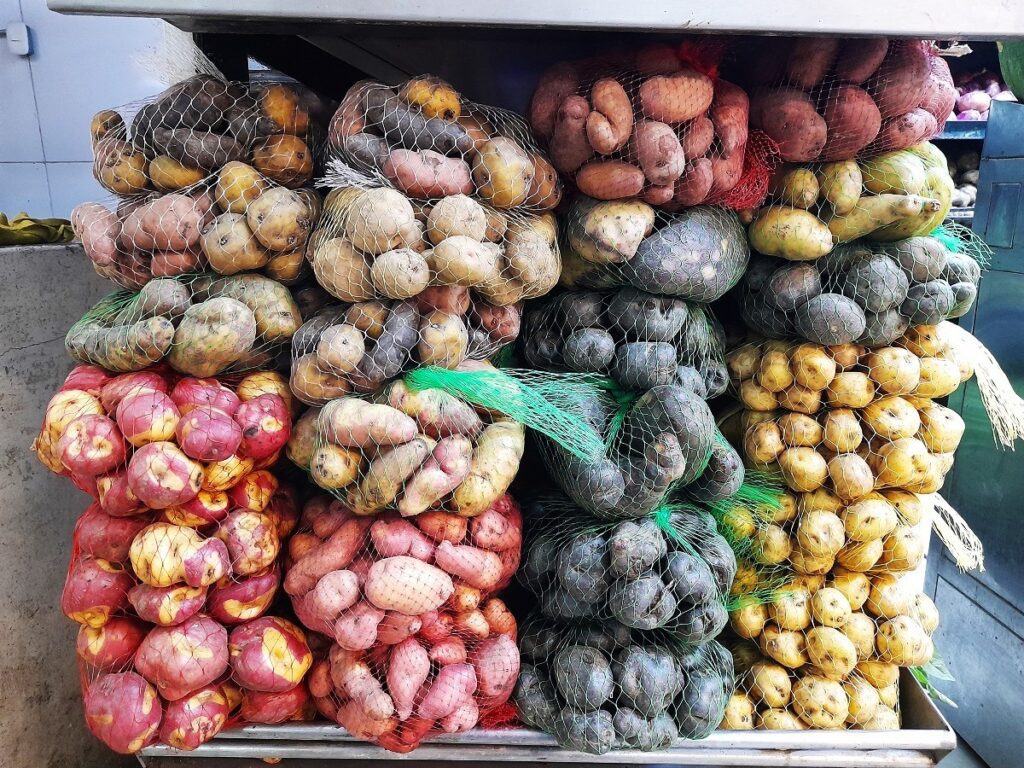
We also learned about and saw the exotic fruits that are native to Peru. For example, chirimoya or custard apple, a Peruvian fruit that I love. Also, we saw aguaymanto (golden berry), tuna (not the fish, but the cactus fruit!), pepino, tumbo, granadilla, lucuma (which we had just had in our shake), different kinds of bananas, and so on.
As part of the food tour, we each received a box to have a small tasting of some fruits, before continuining to travel the streets of Lima until we got to the upscale neighborhood of San Isidro.
Tasting Pisco Sour, Learning to Make Cebiche, and Even More Food
Next, we visited Limaná, a favorite spot of mine, which has a beautiful outdoor patio and indoor sitting spaces as well.
The restaurant has won several sustainability awards, and most of the cuisine is plant-based.
Pisco Tasting and Pisco Sour
Our experience there started with a pisco tasting session. Pisco is a very typical alcoholic drink in Peru, which is made of grapes, and is actually the national Peruvian drink. If you are planning to visit Huacachina in your trip to Peru, I highly recommend you to book a tour to the nearby pisco factories to learn about the pisco-making process.
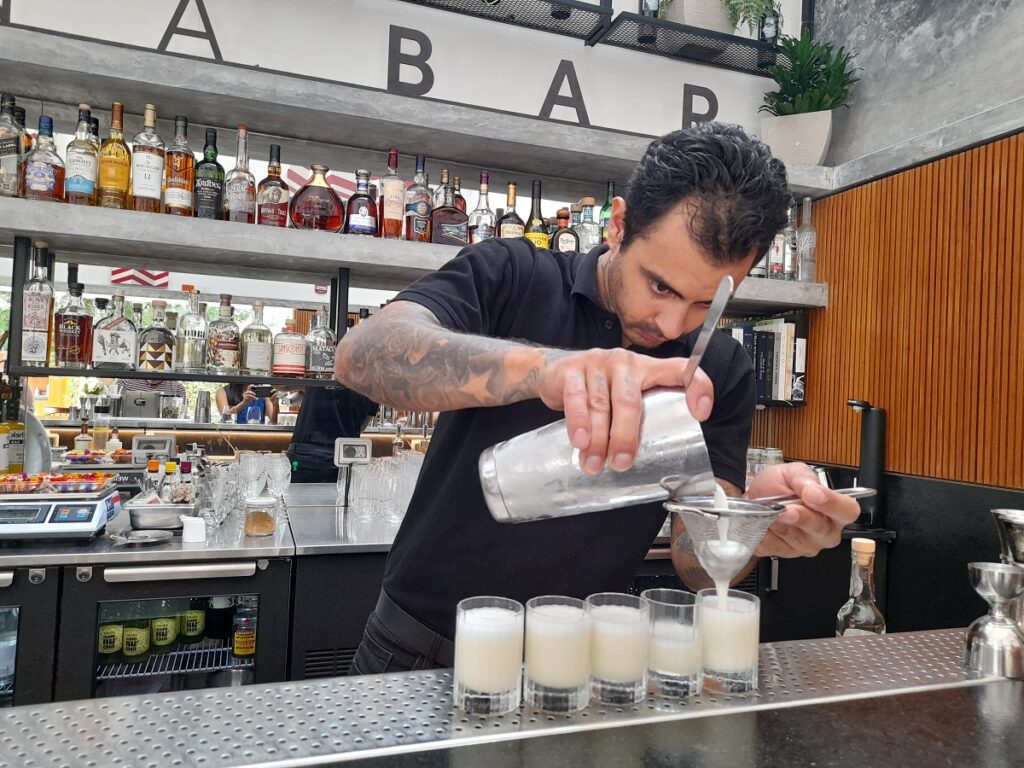
At Limaná, you will learn about the different kinds of pisco and the different levels of aroma they have. The barman will even teach you the correct technique for smelling their aromas. I was very impressed how different they actually smell once you know how to correctly smell them! I’m a Peruvian and I had no idea about this.
Pisco sour is the most emblematic made with pisco. Afterwards, you will learn about the ingredients it has, will see how they prepare them, and will have a glass or two!
Cebiche and Other Delicacies
The food tour continues with a tasting of one of the most popular dishes in Lima: cebiche.
Cebiche (also spelled ceviche) is one of those dishes that Peruvians are super proud of, and it’s probably the signature dish of Peruvian cuisine. But since it’s a dish usually made with fish, you won’t be able to find it (or at least not fresh) in cities like Cusco or Arequipa, that are inland. So Lima, a coastal city, is the best place to try it.
The cebiche awaiting you boasts an intriguing twist: it uses young coconut instead of fish! Young coconut is a great substitute for fish in terms of texture and ability to absorb flavors.
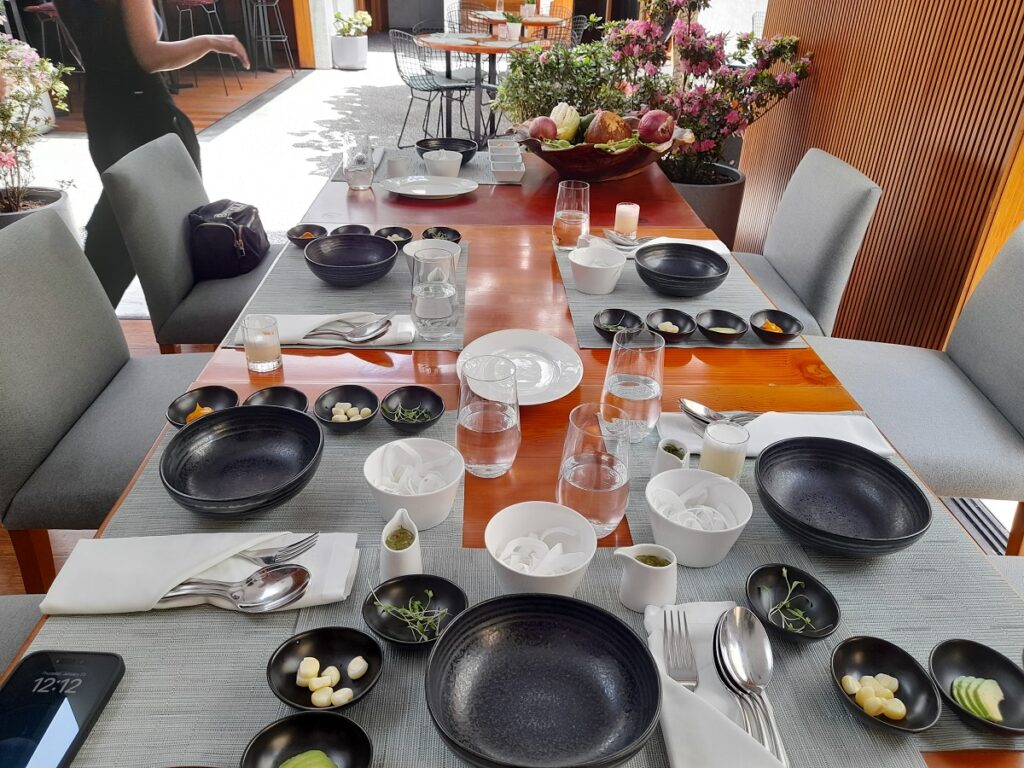
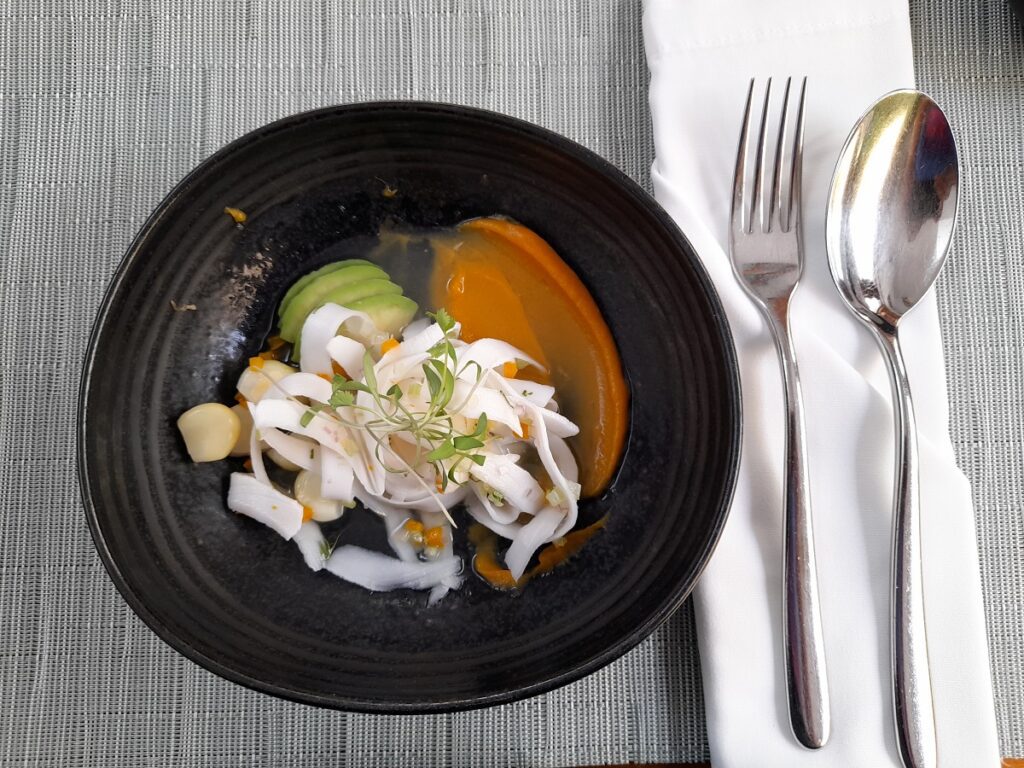
What is interesting about this part of the food tour is that you receive the ingredients of the cebiche and you have to put them together yourself, which is easy to do because it doesn’t require extensive preparation.
You will have your coconut, and other ingredients such as lemon, onion, and chili pepper, in separate dishes, before mixing them all together and enjoying this refreshing dish.
Burger and Cauliflower (or Fish)
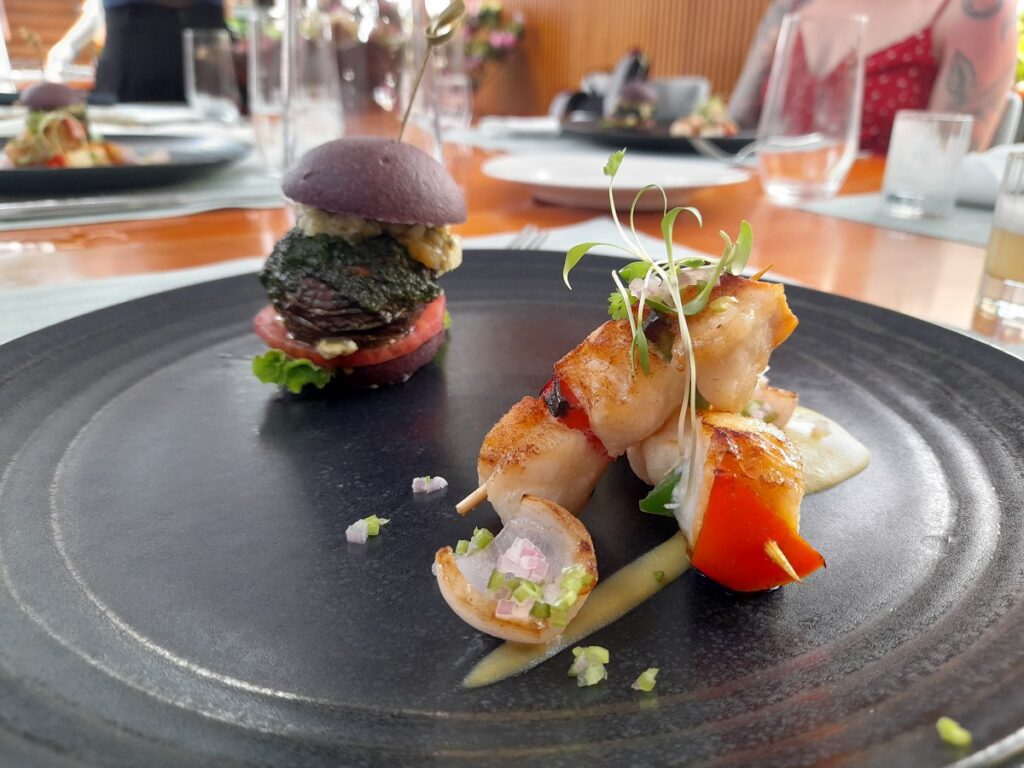
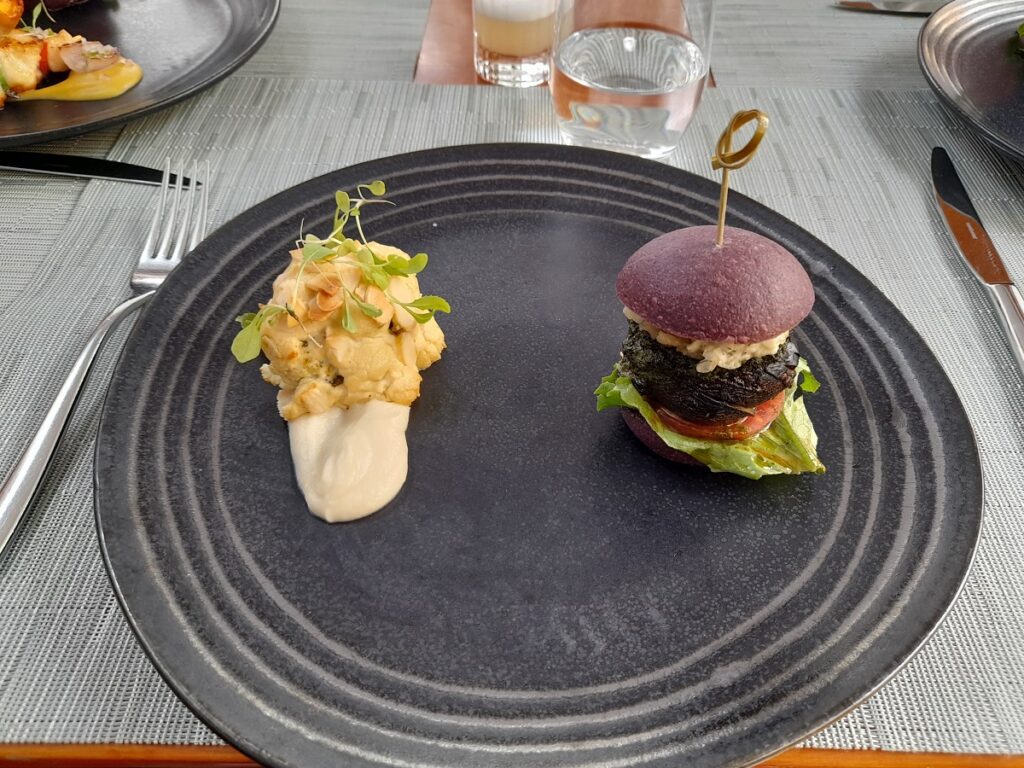
Afterwards, you will continue to discover the traditional ingredients and flavors of Peru.
Up next was a tasty Portobello burger in a unique purple bun. On your trip to Peru, you are likely to see chicha morada in the drinks menu, which is a very typical non alcoholic drink. Chicha is made of purple corn, and so is the bun of this burger!
For vegetarians, the burger comes with a small side of cauliflower. I have no idea of how that cauliflower was prepared, but it was hands down the best cauliflower I had ever had.
Non vegetarians will get paiche, a fish from the Amazon, instead. Paiche is among the longest fish in the world. It’s about the length of twice the height and 3 times the average weight of a person!
La Huaca
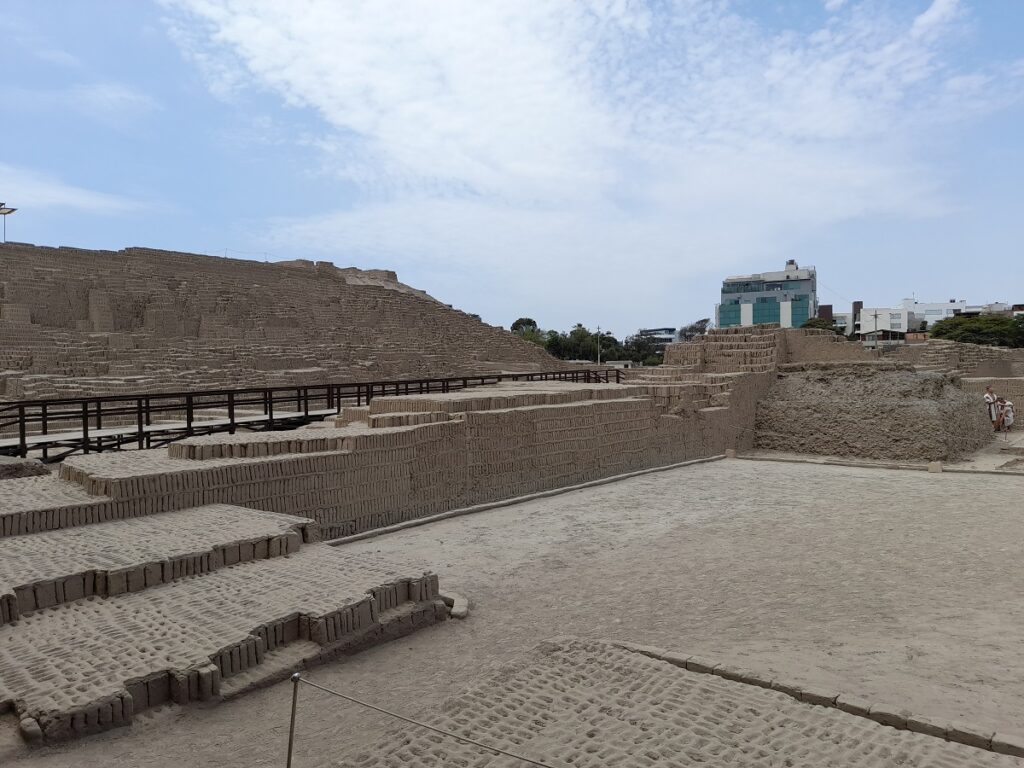
After Limaná, we drove to Huaca Pucllana, an archaeological complex in the neighborhood of Miraflores and one of its top attractions.
There’s a restaurant inside the complex, called La Huaca, which was the last stop of this Lima food tour. Honestly, what a great ending, eating with an amazing view of the ruins, which were built centuries ago by the Limaq culture.
While our guide told us about the history of the place, we tried some of the best and most typical Peruvian dishes. That was when the real feast started!
One of the dishes we had was causa, a typical Peruvian dish made of a specific native kind of potato, lime, and chili.
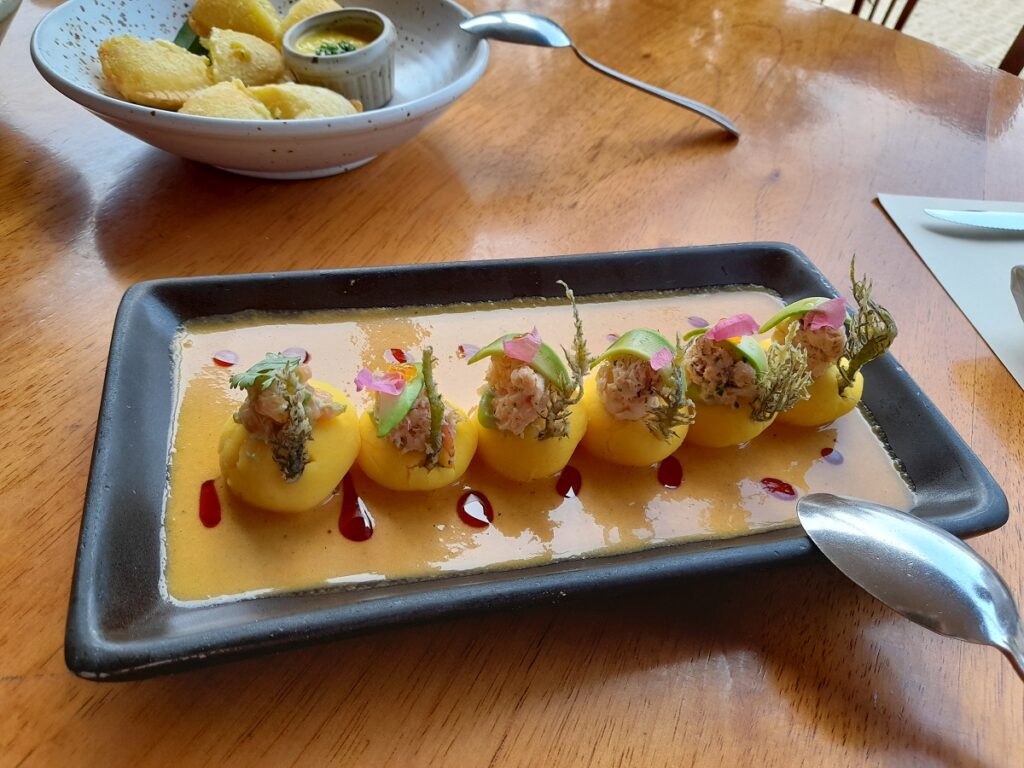
There were also cheese empanadas, with three different kinds of cheese and accompanied by a chili sauce, which were absolutely amazing.
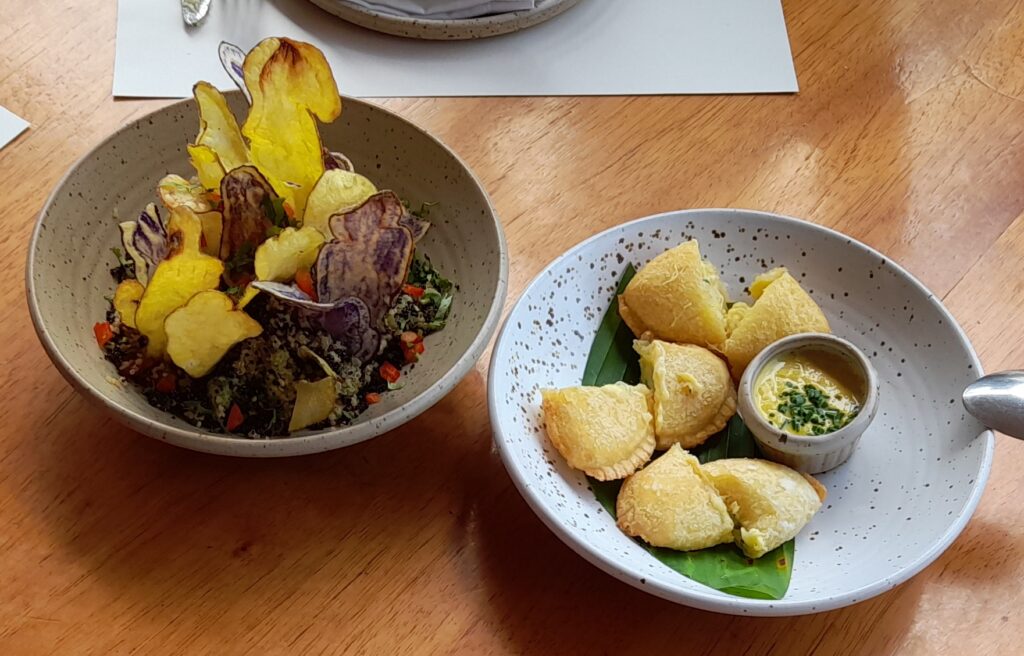
We also had lomo saltado, possibly the most famous typical dish besides cebiche. It’s made with potatoes, tomatoes, and onions. For vegetarians, it was with mushrooms, while non vegetarians had the traditional version with beef.
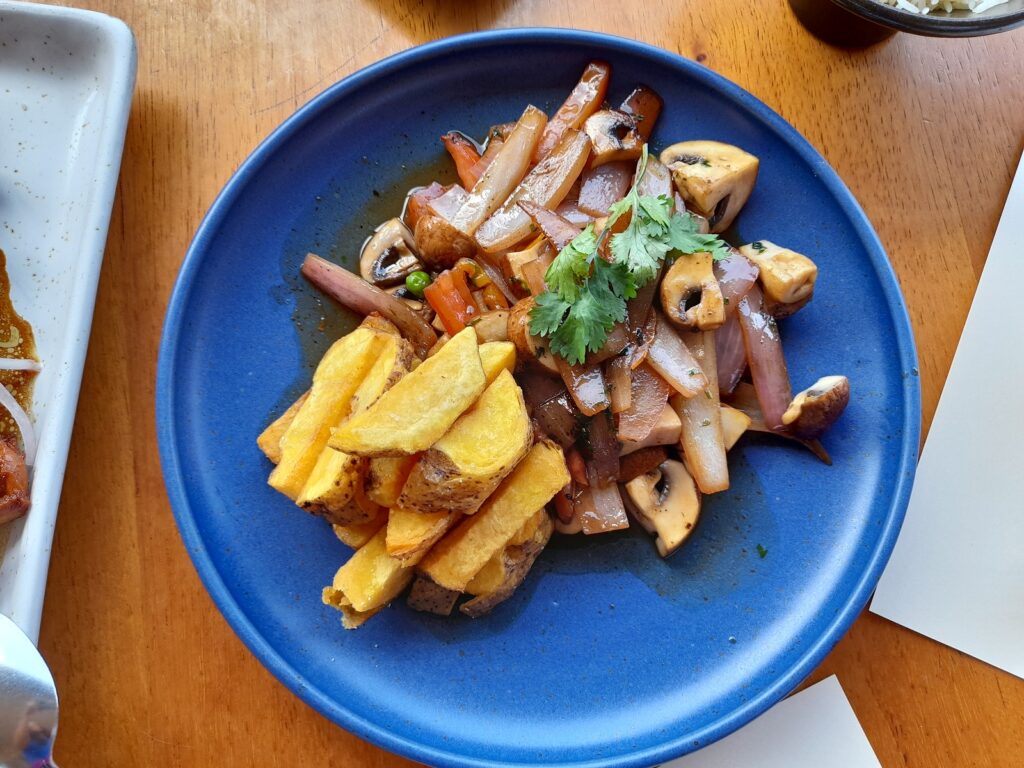
Another dish we had was a quinoa dish (which is native to Peru, in case you didn’t know), topped with native purple potato chips.
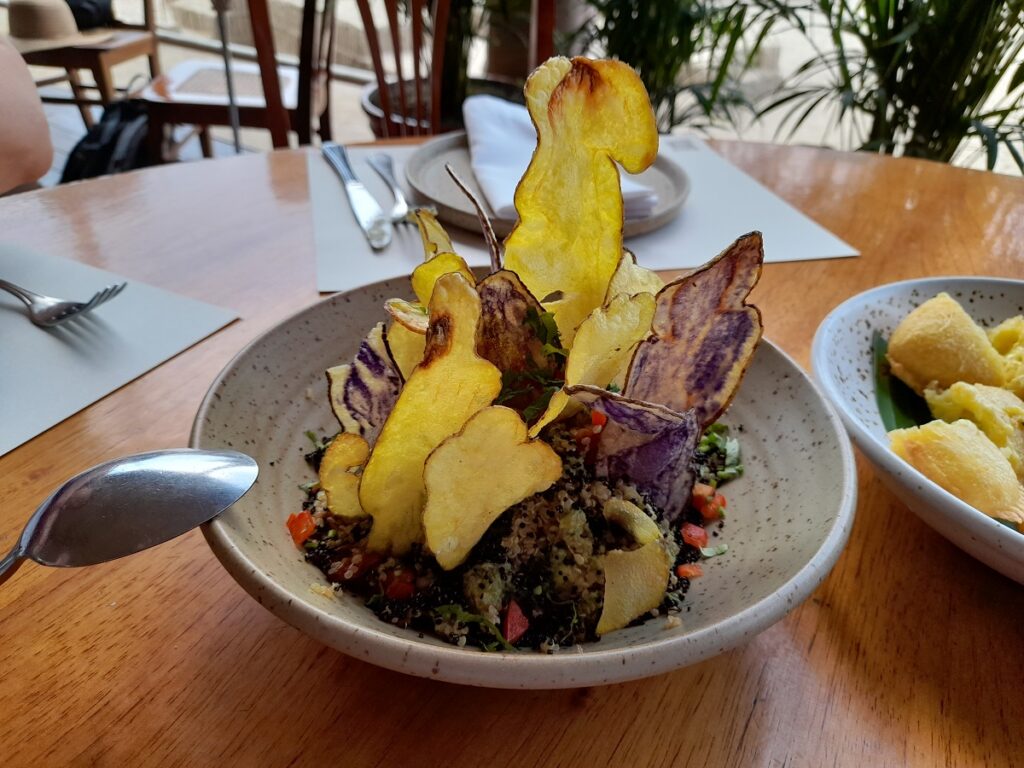
Non vegetarians also had chicken chicharrón, a deep fried chicken dish, accompanied by salsa criolla, a typical Peruvian dressing made of onions, lemon, and chili.
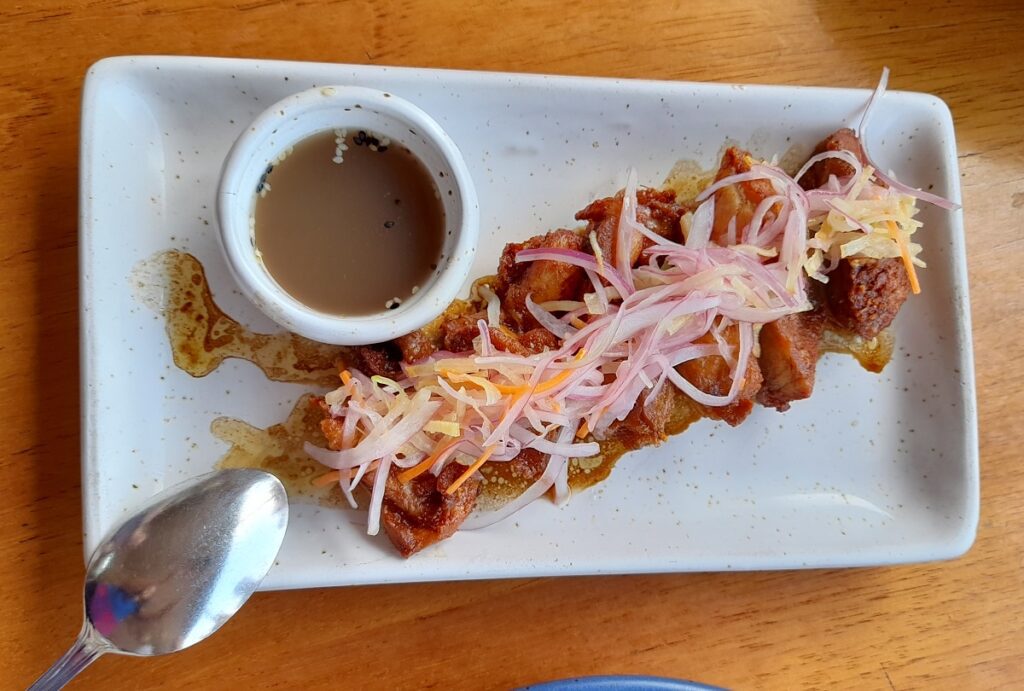
For dessert, we had picarones, a typical Peruvian dessert made of fried of pumpkin flour and eaten with honey.
All of this accompanied by a wine coming from a top winery, Bodega Murga. We were told it was the only Peruvian winery that Central, the #1 restaurant in the world, works with.
How I Felt About this Lima Food Tour
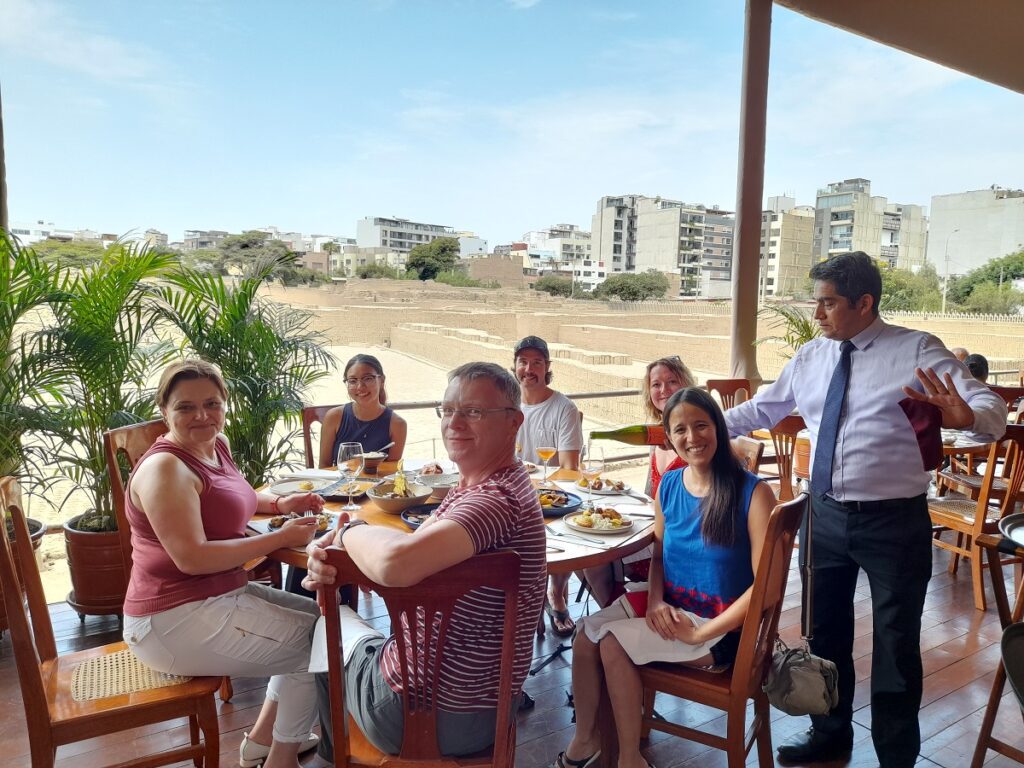
For me, this tour was a solid five-star experience. The five hours that it lasted really gave us a very good idea of what Peruvian food is like.
From fruits and vegetables at a local market, to Peruvian coffee, fruit shakes, pisco sour, cebiche, lomo saltado, and several other dishes; every dish we tried was a perfect snapshot of Peruvian cuisine, delicious and memorable.
Also, being from Peru and Lima myself, I can vouch that the restaurants and cafes we visited during this food tour, are renowned and of a very good quality.
Our guide was great, she was able to give us not just a Lima culinary tour, but also a cultural one. She shared interesting historical facts about each place we visited, which I felt really enhanced the experience.
Moreover, the organization of the tour was top-notch. I didn’t feel rushed at any point, and the transitions from one location to another were smooth and well-timed. The group size was perfect (we were 5 people), allowing for a personal and intimate experience.
In conclusion, this tour was both a feast and a great introduction to Lima’s culinary scene. I highly recommend it to anyone wanting to explore Peruvian cuisine in an authentic and enjoyable way.
Remember that the tour I did was the morning one (from 9:30am to around 2:30pm). The evening tour will be slightly different, with different stops and different dishes, but I’m sure equally good as well.
Book the morning Lima Gourmet Food Tour here.
Book the evening Lima Gourmet Food Tour here.
Before You Go…
As you can see, Lima is a great place not just to walk around and explore, but also to eat. If you are a foodie, make sure to set apart at least two days in Lima to enjoy its food.
If you are still at the stage of organizing your trip, you might want to read this post about how many days to spend in Lima, to get a better idea of how to plan your trip.
Lima is also a great place to taste traditional ingredients with a modern twist at high-end restaurants, being home to several of the world’s top restaurants. If you’re up for a treat, consider a fine dining experience at Kjolle, visit Peru’s most popular chef’s restaurant, Astrid y Gastón, or opt for a tasting menu at the world-famous Central.
In case you are a vegetarian, like I am, you might also want to read this post about vegetarian food in Peru, to know what to expect during your trip.
Spoiler: Finding vegetarian food isn’t so easy, but there are a few great places that offer it. Take a look at this post about vegetarian and vegan restaurants in Lima to discover what they are.

